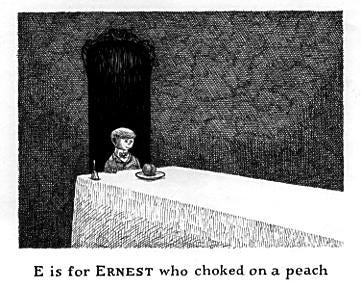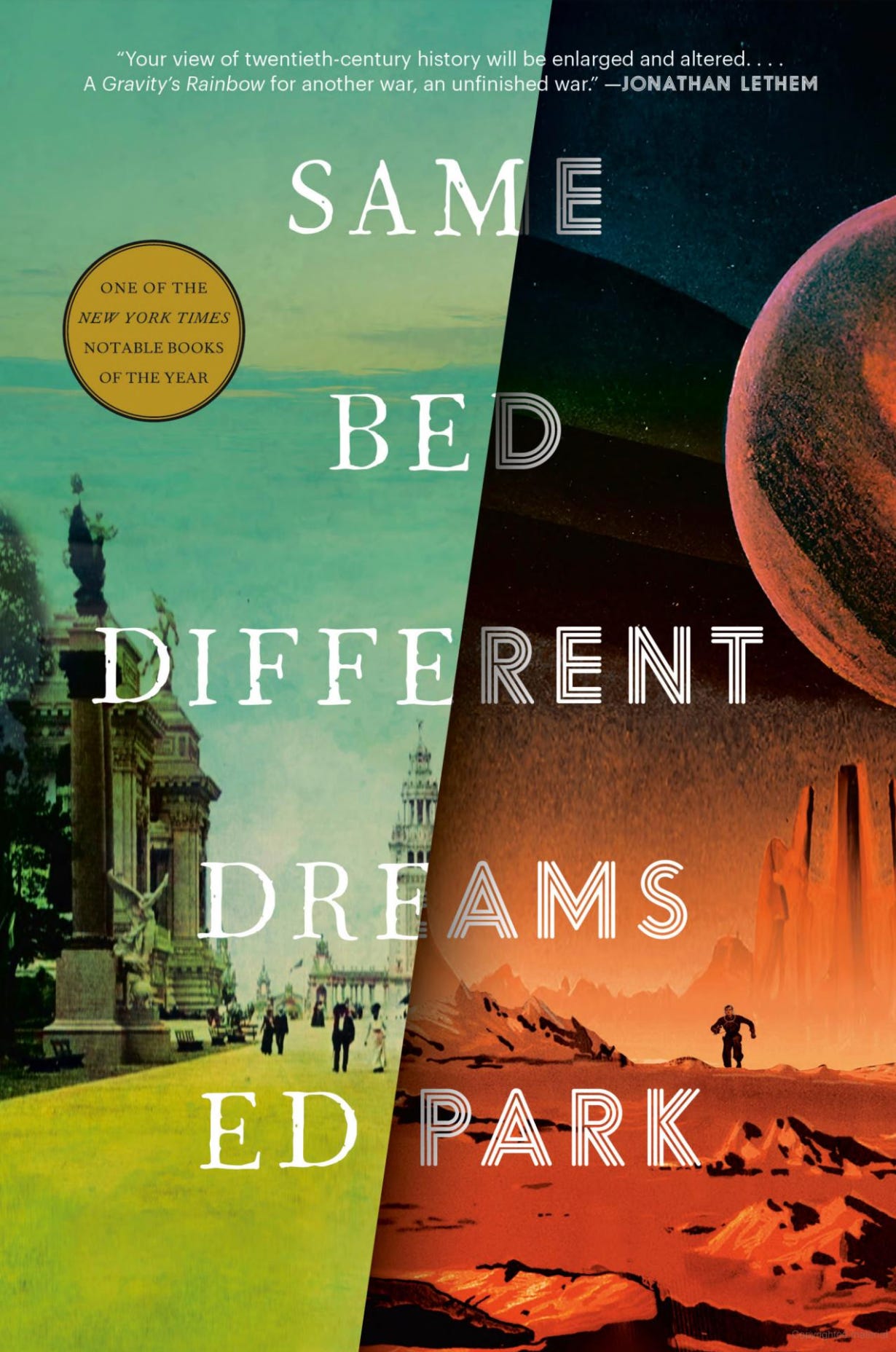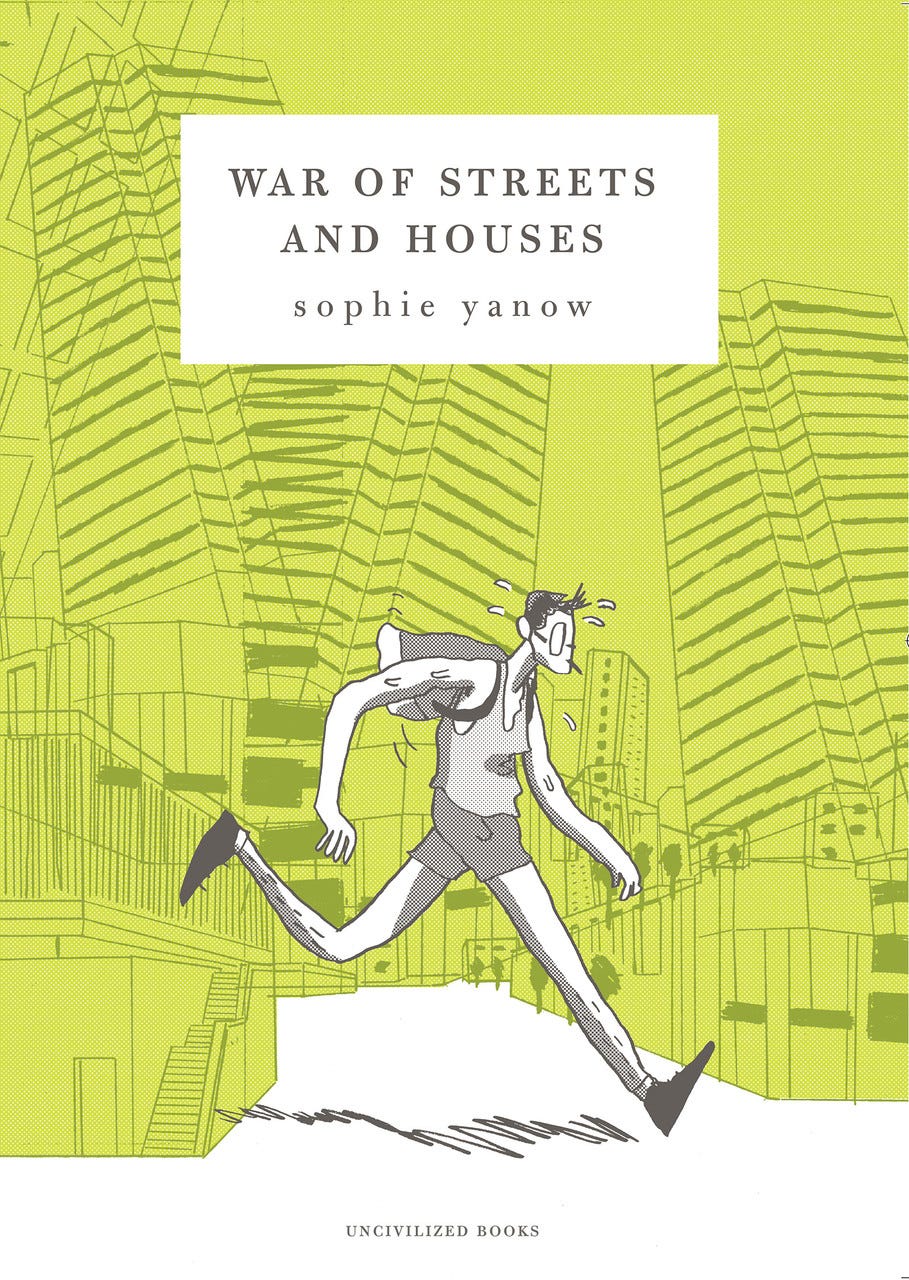Welcome back to my Labyrinth! In this post I’m going to share with you the first constraint for comics that I came up with on my own, back in the early oughts.
The text that follows is adapted from the back matter of my forthcoming collection of constrained comics, Six Treasures of the Spiral: Comics Formed Under Pressure, due this fall from Uncivilized Books. I’ll be sharing more excerpts and news in future newsletters.
Back to Basics
As I was wrapping up 99 Ways to Tell a Story: Exercises in Style in 2004, I was eager to start making longer form comics using the ideas about constraints that I had learned from Raymond Queneau and Oulipo. To get started, I decided I should invent my own constraint, one that I could tailor to my own interests as well as to the potential I saw in comics specifically.
Since this suggested starting from “the basics” I thought a lot about the building blocks of comics and art: lines, panels, language, word balloons… And at a certain point I started focusing on the alphabet. I started to think about how letters might be used as material for a comics-making constraint.
Abecedaries, Pangrams, and Alphabetic Comics
I have this vague memory from Brooklyn in the late 1990s: I was in a café and found myself chatting with guy who showed me a notebook he had filled with pangrams of some sort. For years I remembered them as multiple coherent sentences that used each letter of the alphabet only once but after attempting to compose a few myself I realized that was impossible (or else there’s a pangram genius roaming Park Slope to this day, a character out of the fiction of Paul Auster—who lived mere blocks from where this meeting happened…).
It was one my first encounters with writing constraints in the wild and it may also have planted the seed of using the atomic particles of writing as a source for creativity.1 I do wish I’d thought to keep in touch with the guy.
Abecedary comics are not a new concept. There have been any number of them over the years, but they tend to simply feature a sequence of words and images working through the alphabet at a pace of more or less one letter per panel. Of course, Edward Gorey’s Gashlycrumb Tinies is another stellar precedent for the way it adds black humor, absurdity, and restrained, Ozu-like compositions to this often banal children’s genre:
However, I wanted to try something more challenging, more constrained, so first I decided that each letter should correspond to exactly one panel—an English-language comic, then, would be 26 panels long (the layout would determine how many pages).
I then decided that rather than allowing the initial-letter solution you usually find—an apple for the “a” panel, and so on—it would be more fun and challenging to try to make representational drawings (people or objects) that mimicked the shape of each letter (allowing upper and lower case, different fonts and letter shapes). I also thought that it could be productive to start each word balloon or narration box in a given panel with its corresponding letter. (A more severe version of this aspect of the constraint would be to make every word in the panel start with its corresponding letter, as in Walter Abish’s novel Alphabetic Africa).
Prisoner of Zembla (2004)
I wanted my first oubapian short story to be rigorous, so for starters I took advantage of comics’ (and printing’s) built-in constraints by opting to lay out my comic as a 9-panel grid:
This meant my comic would be three pages long with one English letter per panel. I would come up just one panel short of the total 27 (3 pages x 9 panels), which I eventually realized could be a title panel, which I further constrained by distributing the text evenly, eight letters per line:
I had no idea what kind of story I would tell or even what that drawing style would look like… I started out doodling on sheets of paper, one sheet for each letter of the alphabet. I looked for faces, expressions, bodies, or gestures that I could draw that would resemble a letter form.
As I was sketching, my thoughts ran towards what it meant to be drawing a comic about written language, a comic where the alphabet is embodied in the drawing. This suggested the idea of hiding or removing the alphabet from the comic—banning it, in a way.

Slowly, a story started to take shape about a foreign professor in the US learning that her native alphabet is under threat. I studied linguistics for a while as an undergrad and I happened to have two Eastern European professors, one of whom had the first name Alina, the other the last name Zec—A sign that I was on the right path! I imagined a country where the traditional written language is going to be replaced by the Roman alphabet—an act of erasure that has, in fact, happened many times throughout history—and centered the drama on the effect this alphabetic replacement has on Professor Zek.

I had recently read Vladimir Nabokov’s Pale Fire so I couldn’t resist using his fictional slavic country of Zembla, especially since it starts with a Z. The title, a riff on Prisoner of Zenda, then offered itself up to me.2

It took a long time for me to get a handle on this comic and I am happy with the results but I found that the constraint forced me into a very compressed narrative style, at least for the story I found myself wanting to tell. That story, however, came directly out of my interrogation of this contradictory constraint (drawings out of letters; comics out of writing) which had me mining my own history and interests in unexpected ways. As a proof of concept for the notion of creating comics with constraints, I was sold and ready to embark on my next project.
“Prisoner of Zembla” will be the lead story of my new collection, which is at the printer as I type this!
Give It a Try!
The Alphabet City constraint is pretty demanding because of the number of panels and pages, but the rules are straightforward:
Draw a comic that is the same number of panels as the alphabet of the language you are writing in.
Each panel corresponds to one letter, in images as well as in language.
You decide how many pages you need to tell the story.
The drawings in each panel should mimic the corresponding letter of the alphabet.
Each text box or balloon should start with the same corresponding letter.
As always, I’d love to see your work if you make one of these (or something similar). And remember that with a paid subscription you can share it with me in my Chat or in one of my periodic group Zooms (planning one later in July!)
Three Things I've Been Enjoying
1
Same Bed Different Dreams by Ed Park
This is the kind of novel that insinuates itself into your imagination and has you seeing strange links between disparate cultural and historical events long after you’ve finished reading. It’s funny, dazzling, overwhelming, and formally inventive, “with the thorough weave of a video game where all of the NPCs become important somehow,” as
put it in his review for the New Republic—which you’ll find a link to in his Substack “expansion pack” full of even more thoughts—an appropriate way to engage with a book that doesn’t want to let go.Full disclosure/humble brag: I’m thrilled that Ed has written an introduction to my new book, which I got up the nerve to ask for after he did such a nice write up of Ex Libris (and Bridge and 99 Ways to Tell a Story) in the NYT Book Review back in 2021.
2
War of Streets and Houses (2014), by Sophie Yanow
Some friends recently pointed me to this book by Sophie Yanow which escaped my notice when it came out (and is coincidentally published by my publisher, Uncivilized Books).
The two things appreciate about it are its mixture of memoir, cultural critique, and visual essay along with Yanow’s minimalist drawing and page layouts, which feel at once loose and sketchy yet also carefully thought out and stylish.
3
The vivid color design in John Boorman’s Point Blank (1967):

Thanks for reading. I may follow up this post with a few more examples of alphabet-based comics—I’ll make it a Substack post only because I don’t want to overuse my mailing list. If you’re not already using the Substack site or app, I recommend it.
Paid subscribers will be hearing from me soon about our next Zoom meet-up.
Meanwhile, I hope you’ll share this post if you enjoyed it and feel free to comment about alphabetical constraints or any of my “Three Things.” See you soon.
Weirder still—since I don’t remember noting it at the time—I’m pretty sure this young man also inspired the (alphabetical) climax of one of the characters’ story arcs in my second book, Odds Off:
I’ve had this title floating around in my memory since childhood but now that I look it up I realize I have no idea what it is or why I know about it. For one thing, I thought it was a music, having perhaps conflated it with The Pirates of Penzance this whole time!















I'm reading the Ed Park book right now and very much enjoying it. I wish I knew more about Korean history, but for the time being I'm spending a lot of time going back and forth with resources to sort out what is real and what is fantastical.
Oh I’m so glad you enjoyed the review and the expansion pack. Thank you!